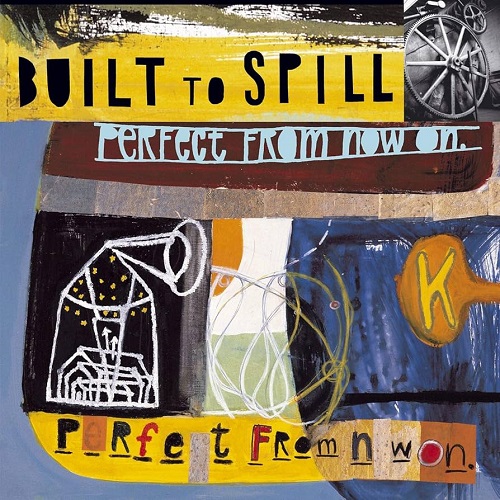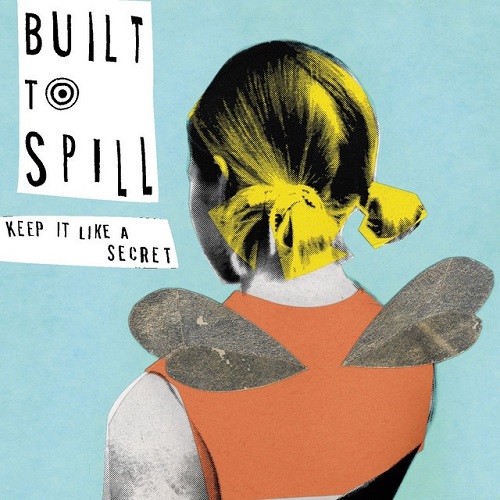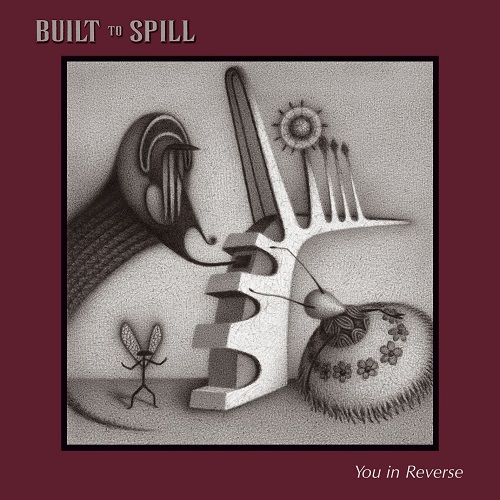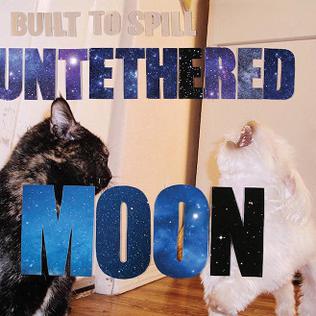| Track | Album |
|---|---|
| Nowhere Nothin’ Fuckup | Ultimate Alternate Wavers |
| Distopian Dream Girl | There’s Nothing Wrong With Love |
| Big Dipper | There’s Nothing Wrong With Love |
| I Would Hurt A Fly | Perfect From Now On |
| Bad Light | Keep It Like A Secret |
| Virginia Reel Around The Fountain | Live |
| Happiness | Ancient Melodies Of The Future |
| Goin’ Against Your Mind | You In Reverse |
| Conventional Wisdom | You In Reverse |
| Good Ol’ Boredom | There Is No Enemy |




At a time when a post-reunion Pavement is enjoying some long-overdue popular attention, Guided by Voices continue to pour out two albums a year, and Yo La Tengo somehow manage consistent releases decades into their existence, it feels like Built to Spill don’t get their fair share of recognition among 90s indie rock royalty. But the outfit—essentially frontman Doug Martsch with a few band configurations over the decades—released some of the most exciting guitar-based indie music of the alt.rock era, and remain a vital force, still touring and intermittently releasing fine new music.
On their 1993 debut, Ultimate Alternative Wavers, Martsch quickly established Built to Spill as part of the throughline from Television through Dinosaur Jr., boldly finding a place for blazing guitar pyrotechnics in an indie scene typically impressed with bare-bones simplicity. The music is jagged and complex, a more skewed post-punk iteration of the grunge emanating from west of the band’s Boise, Idaho base, while Martsch’s plaintive Neil Young-adjacent vocals give the songs a ragged, homespun feel. Album centerpiece Nowhere Nothin’ Fuckup strikes a balance between classic rock guitar heroes of yore and the roughshod innovation of Sonic Youth, slow and jangly in the choruses while cutting free into noisy discordance, freely quoting the Velvet Underground in the lyrics.
1994 follow-up There’s Nothing Wrong With Love sanded off some of the rougher edges of the debut, with a cleaner sound, but the more prevalent jangle didn’t hide Martsch’s more cacophonous tendencies. A few tracks manage an almost poppy sensibility, especially Distopian Dream Girl, an absurdly infectious Television-esque dual-guitar attack paired with some attention-grabbing lyrics. “My stepfather looks like David Bowie, but he hates David Bowie. I think Bowie’s cool, I think Lodger rules, my stepdad’s a fool.” It’s a shoulda-been break-out hit if alternative rock hadn’t quickly lost any sense of adventure. Big Dipper is perhaps even closer to radio-friendly, suggesting a more commercially viable course if the band hadn’t opted to switch directions. (1996’s The Normal Years collects various singles and outtakes from the same period, mostly cut from the same cloth as Nothing Wrong.)
Still, it wasn’t until 1997’s Perfect From Now On that the band established the sonic blueprint that would get them through the next few records. Reverting to the noisier vibe of the debut, the album is largely comprised of slowed-down, jam-friendly guitar epics indebted to 70s classic rock while clearly informed by left-of-the-dial post-punk indie. It works better as a whole than song-for-song, though I Would Hurt A Fly is relatively striking in its own right, a slow, dark dirge that rises into something boisterous and a little dangerous.
It all finally gelled on 1999’s Keep It Like A Secret, arguably the band’s peak, where they shortened the songs a bit, adding some pop hooks while maintaining Perfect’s adventurous guitar ambitions; it’s nuanced and dynamically varied, the sound of a band confident in both its songwriting and studio mastery. The result is a surprisingly consistent record full of killer stand-alone tracks, but also a unified whole that stands alongside the most definitive and durable indie rock LPs of the era. It’s tough to pick a single representative track, but for Toppermost purposes I’m landing on Bad Light (at least at the particular moment I’m writing this; ask me again tomorrow), which blends the Pixies’ quiet-loud-quiet dynamic approach with relatively straightforward rock & roll, infectious yet, once again, with a whiff of danger.
Having finally conquered the studio, it was time for the obligatory live album, just like those 70s dinosaurs Martsch wasn’t afraid to sometimes emulate musically. But 2000’s simply-titled Live is no mere contractual-fulfillment cash-grab. Not surprisingly, as the band’s studio mastery grew, so did their live chops, the stage giving Martsch’s fretwork some helpful breathing room. So alongside the muscularly-performed album tracks, you get a 20-minute romp through Neil Young’s Cortez The Killer. But the real gem is Virginia Reel Around The Fountain. The track was originally recorded by The Halo Benders, a supergroup of sorts pairing Martsch with Calvin Johnson of Beat Happening, who released a few albums in the 90s. The studio version was already pretty great, but performed live it absolutely explodes, a post-punk anthem full of riveting guitars and thunderous delivery.
Their next studio effort, 2001’s Ancient Melodies Of The Future, wisely stayed in their comfort zone, a solid sequel to Secret that doesn’t stray far from that record’s blueprint. But it also includes Happiness, as close to an indie pop song as the band had managed since Nothing Wrong With Love. After a brief acoustic intro, Martsch plunges into a catchy riff-rocker with some wicked slide guitar, perfect for your indie rock mixtape needs.
Following a prolific run of albums, Built to Spill took a brief sabbatical. When they returned in 2006 with You In Reverse, they had an expanded line-up and a slightly slicker sound. The tell-tale dense 90s alt.rock sound gives way to a cleaner (yet no less adventurous) aesthetic, taking more advantage of the studio. Purists might blanch, but the record offers some of Martsch’s best tracks to date. Opener Going Against Your Mind is an extended guitar vamp, fast-paced and frenetic but taking time for a dynamic mid-song jam, like Television’s Marquee Moon given a modern sheen. Meanwhile, Conventional Wisdom operates in the same poppy hook-driven space as Happiness (hell, there was even a rare band video!), albeit given a little more room to stretch out.
The album releases have grown infrequent since Reverse (their most recent coming in 2022), but they remain reliably solid. Even if the albums aren’t breaking new ground, there are still stand-outs to be found on each record. I’m particularly fond of Good Ol’ Boredom, off 2009’s There Is No Enemy, which feels like a sequel of sorts to Conventional Wisdom, more poppy riffs stretched out to classic rock length. (See also Living Zoo, another latter-day stand-out, from 2015’s Untethered Moon.)



Marc Fagel is a semi-retired securities lawyer living outside San Francisco with his wife and his obscenely oversized music collection. He is the author of the rock lover’s memoir Jittery White Guy Music. His daily ruminations on random albums and songs in his collection can be seen on his blog of the same name, or by following him on Twitter. Marc’s previous posts include Lilys, Dressy Bessy, Mary Lou Lord, Amy Rigby, Young Fresh Fellows, Josh Ritter, Hold Steady, Game Theory, Reivers, Shazam, Guided By Voices, Connells, Big Audio Dynamite, Sleater-Kinney, Liz Phair, Apples In Stereo, Sweet, Bats, Matthew Sweet, Badfinger, New Pornographers, Bettie Serveert, Flaming Lips, Neil Young, My Morning Jacket, Raveonettes, Phish, Luna, Jesus and Mary Chain, Feelies, Genesis, Wilco, King Crimson, Brian Eno, and the Elephant 6 Collective.
TopperPost #1,150

 Young Knives
Young Knives
Submit a Comment